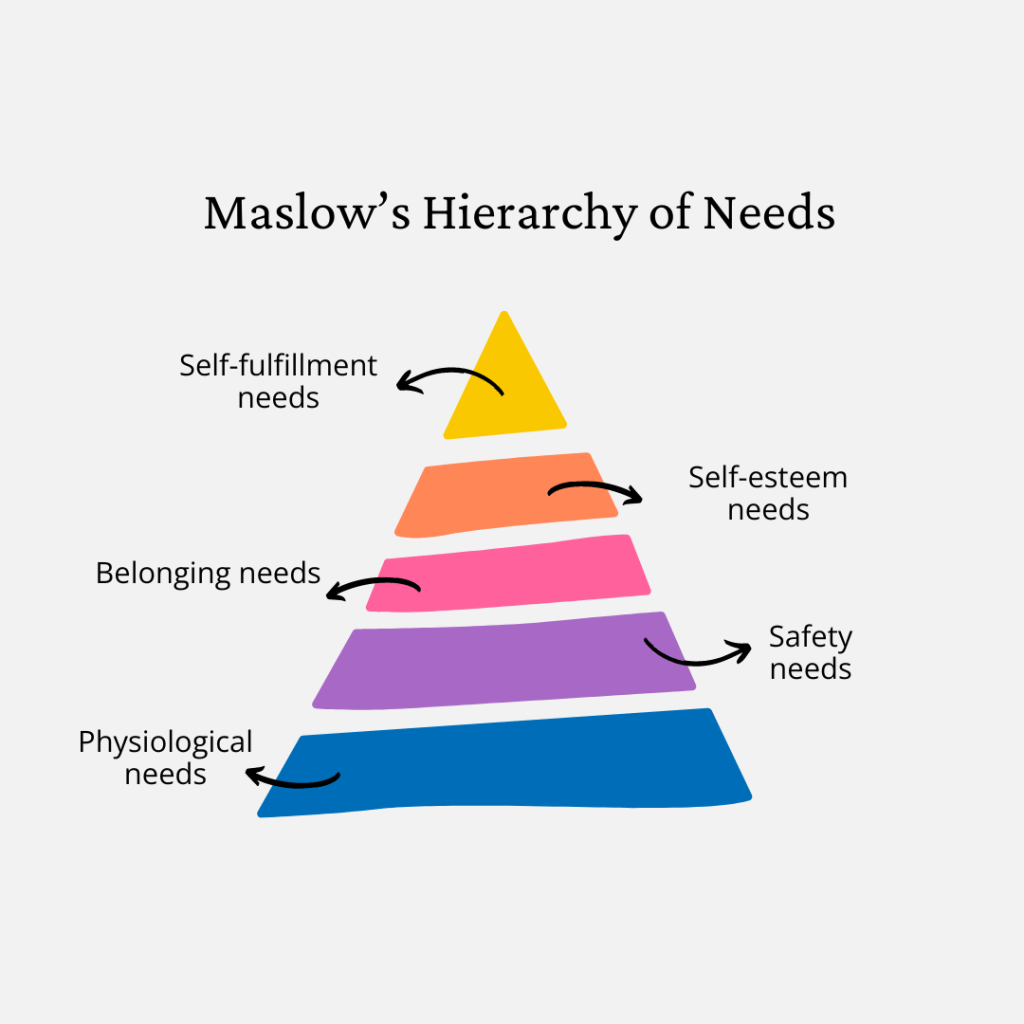What is employee engagement?
Employee engagement is defined as employee’s involvement, enthusiasm and emotional investment in their work.
Productivity is directly related to engagement. According to Gallup, businesses with engaged employees enjoy:
- 10% higher customer ratings
- 17% higher productivity
- 20% higher sales
- 21% higher profitability
Employee engagement vs employee satisfaction
Employee satisfaction describes how content employees are with their work. Satisfied employees are happy to do what is required of them, but don’t necessarily go above and beyond as engaged employees will.
It can be helpful to compare the two against Maslow’s hierarchy of needs. The most basic needs are physiological, followed by safety, belonging, esteem and self-actualisation.

| Level of Maslow’s hierarchy | Original need | In the workplace |
|---|---|---|
| Physiological | Air, food, shelter, sleep, clothing. | Salary, stable employment |
| Safety | Health, employment, property, family, social ability | Safe environment, fair working practices, job security. |
| Belonging | Friendship, family, intimacy, connection | Social acceptance, inclusion |
| Esteem | Confidence, achievement, respect from others | Respect, recognition, personal growth |
| Self actualisation | Purpose and meaning | Autonomy, alignment of professional and personal goals |
Employees can be satisfied as long as their fundamental physiological and safety needs are met. Engagement only comes about once esteem and even self actualisation needs are met.
As such, employees need to be satisfied before they can be engaged.
How to measure employee engagement?
There are multiple ways to measure employee engagement using a mix of people metrics and human insights.
Useful People metrics to measure are:
- Turnover rate: the rate that people are leaving your company
- Absenteeism rate: how many people are absent from your company
- eNPS (Employee Net Promoter Score): how much would people recommend your company as a great place to work
- Progress against targets. There is no objective way to measure progress against targets, and they can be very easy to game as targets change people’s behaviour.
- Engagement with a work platform, be that a communications tool or engagement platform.
Useful human insights to measure are how people feel against key engagement drivers:
- Purpose: what the organisation stands for and where it is going
- Enablement: conditions that enable you to do your job well
- Autonomy: influence over your own work and circumstances
- Reward: intrinsic (felt) and extrinsic (experienced) rewards for your efforts
- Leadership: leaders listen, support and enable positive change.
You can measure human insights through:
- Surveys
- Stay interviews (and exit interviews)
- Formal insight gathering activities, like a focus groups
- Informal insight gathering activities, like having a regular drop in slot to give for people to talk about anything.
What does good employee engagement look like?
At Freeformers, we believe that there has to be a balance between the value an employee brings to an organisation, and the value an employer provides its workforce. Tip too far one way and people feel undervalued, disengaged and into “quiet quitting” territory. Too far the other way and the organisation may struggle to be profitable, efficient or have a good culture.
There has to be balance. It has to be mutual. We call this Mutual Lifetime Value.

A high Mutual Lifetime Value, coupled with a high eNPS score, is a good indication that people are engaged. Strong human insights is another good indicator, such as people saying they feel motivated.
The important thing is that measurement has to be frequent, otherwise you have a snapshot in time that you can’t compare to anything. You have an eNPS of 45 – great, but how does that compare to 3 months ago? 3 months in the future? In an ideal world, you want to set up a way to capture data continuously, without bombarding your people with surveys every 5 minutes.
How to improve employee engagement?
The key to improving employee engagement is to look at your data and insight to find out what is and isn’t working.
Quantitative data like surveys or people metrics often tells you what is happening, but not necessarily why it is happening. The next step is to understand why, and we find the best way to do that is to gather more human insights by talking to your people. Armed with the reasons why, you can target your actions to have the most impact.
Need help getting started?
A great place to start is to gather the data together to work out if your employees are engaged.
